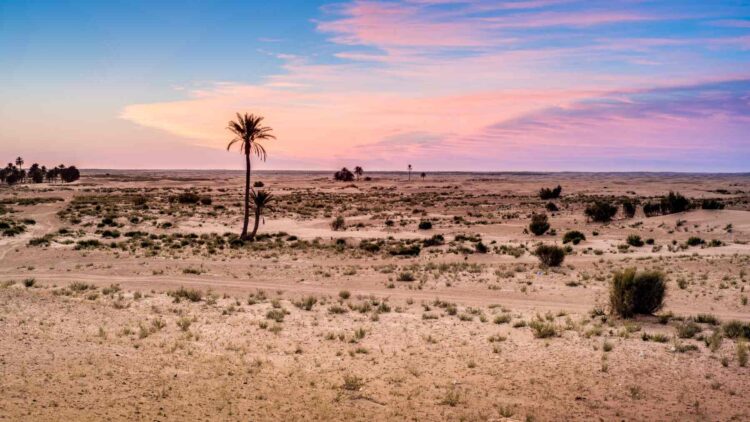While we all know by now that circles in the middle of nowhere are not made by aliens, it is still a curious occurrence when they are picked up by satellites in the sky. What we can see form space is a fascinating take on how we live, as the people watching are so close and yet so far away that it really underscores how perspective is key. The latest of this phenomena was picked up by a camera affixed to the International Space Station as it went over the Tunisian desert.
The International Space Station serves a multitude of purposes, mostly related to conducting scientific experiments in microgravity and studying the space environment, it also has multitude of cameras affixed to it that allows both governments and some private companies to survey not just space, but the areas of the earth they go through, which is how we saw this image of carved symbols in the desert.
The Tunisia desert carvings seen from space
Sen, a company with three cameras mounted on the International Space Station, has one lens directed directly at Earth, capturing a view roughly 250 by 150 kilometers in scale. This footage is available as a high-resolution 4K livestream, offering Ultra HD visuals with a pixel width of around 4,000.
Installing these cameras on the International Space Station involved a rigorous approval process. Sen’s equipment had to undergo Electromagnetic Interference (EMI) testing to confirm it would not disrupt the station’s communications or radio systems. Additionally, it faced three rounds of NASA safety evaluations. To finalize placement, Sen needed a hosting partner on the expansive, multinational station, eventually securing a spot on a European Space Agency module via an Airbus platform, which supplies both power and partial access to a NASA data downlink.
In some of the latest recordings, Sen noted what looked like large, unexplained markings appearing in the sand below, prompting intrigue over their origin and nature. Charles Black, the founder of the Earth and space livestreaming company Sen, which picked up the original images, spoke to Mashable about the phenomenon “This caught our attention. […] You never know what you might see.”
In this particular case, what we can see is obvious and was immediately picked up as part of agriculture activity patterns. The fact that the images were picked up a bit farther into the desert than some might have anticipated is what makes them exciting and stand out, as they contrast very well the barren desert plains in Tunisia. But although this case is obvious, Sen does not always explain the images they capture with their cameras, instead letting viewers make their own suggestions and have their own opinions on what is shown.
“We want the audience to be engaged,” Black said. “It’s promoting debate, discussion, and interest. We’ll label the location, but we want the viewers to decide, discuss, and make comments.”
Engagement is important as space is expensive and the company has to maintain viewers interested, although one could argue that the new sights that come in every week are engaging enough by themselves as the International Space Station revolves around Earth. As Black confirms “Whenever you log on, you can see something different. You never know what you might see.”
This is because the International Space Station goes around the Earth about 16 times every single day, but it does not maintain the same orbit, it moves a little to the west with every rotation as it continues to take impulse from the Earth’s gravitational pull and then fall down. This means that the spectacular views are always changing, and if you watch the livestream, you will find that “You see a beautiful planet and a borderless world,” Black said.

